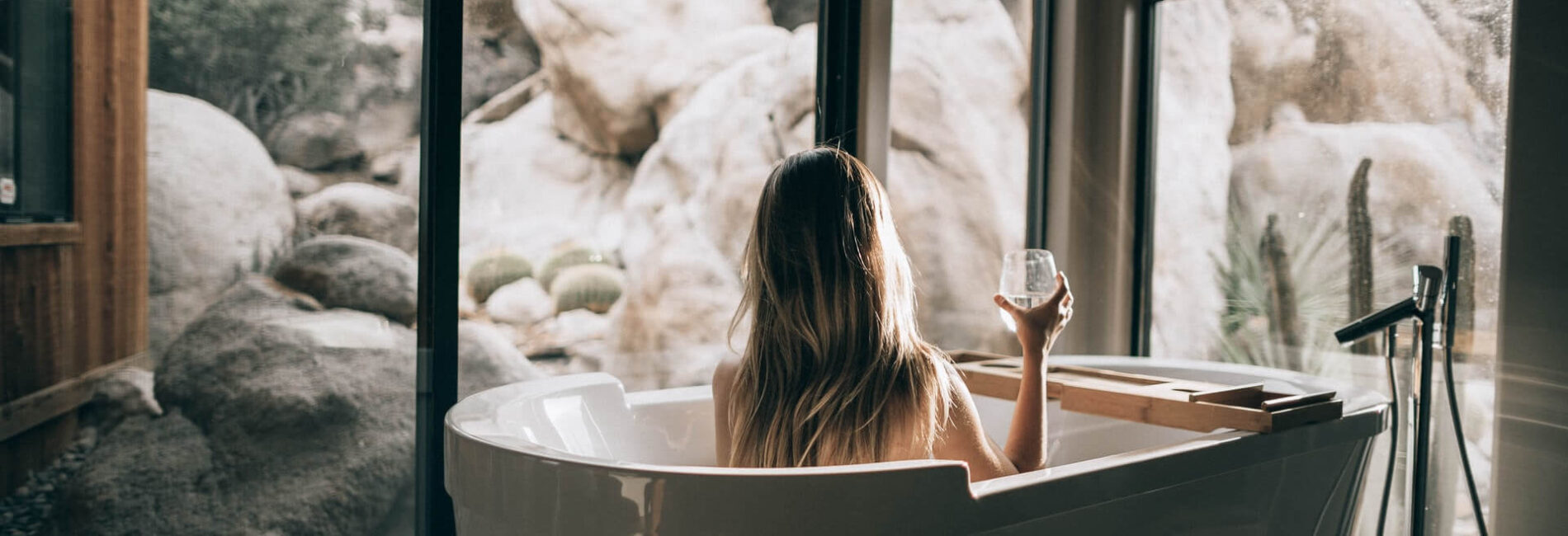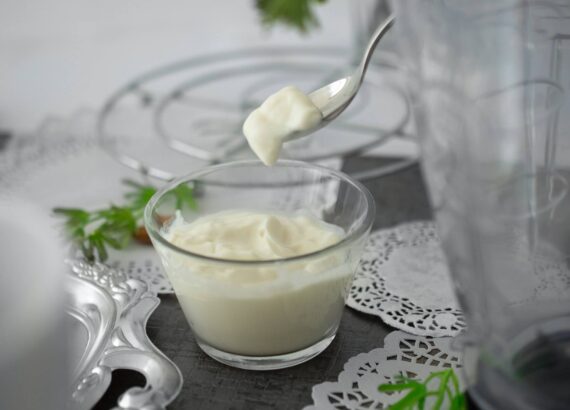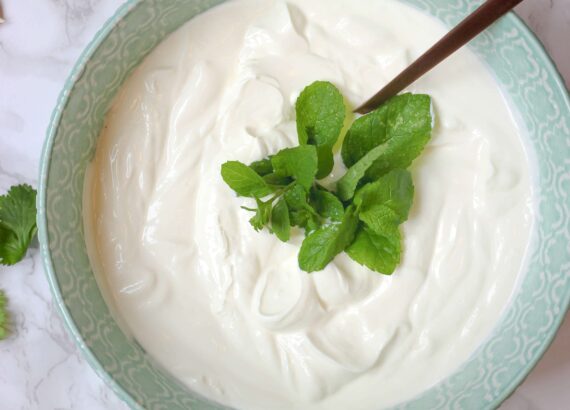My fingernails are shot, my hands feel like rubber, and I ruined my pants from the bleach, but my shower stall in my master bath looks great!
February’s Fix-It-Up Project is re-caulking my master bath. Now, you may not know this about me, but I’m a big researcher. Before any task or project, I search the internet for how-to guides and tips to make my chore simpler. Most of the instructions out there for re-caulking consisted of 3-4 easy steps…what they don’t tell you is the reason I’m writing this blog series. I’ll cover the real story with all the successes and failures. Think of it as my own little reality series!
This month, I took on another seemingly simple project of re-caulking my bathroom shower stall. This 15-year-old shower has seen better days. What was once pearly white and clean is now moldy and dirty. (I’m even grossing myself out). Oh, don’t get me wrong, I clean it as any homeowner would do, but that doesn’t begin to touch the 15-year buildup on the plastic shower pan.
The online instructions say “1. Remove the old caulk.” Well, that sounds simple enough. What they don’t tell you is it’s a half-day job of sweating and cursing, interspersed with runs to the local hardware store to look for tools and new shower doors. So, here’s my version of the real instructions for this project.
1. Remove the old caulk.
- Get all your supplies ready, then realize that that cool tool that Geri gave you to easily remove old caulk is not where you thought it was.
- Call Geri to borrow hers. She can’t find hers either. (See our series on Organizing Your Home)
- Drive to Home Depot in your “caulking clothes” to buy a new one. Pray you don’t see anyone you know. Get distracted from all the other cool stuff in Home Depot. Afterward, realize it’s too late to start on the project, and put off until tomorrow.
- The next day, begin using the tool to remove the old silicone caulk. You realize after 30 minutes of digging and cursing that that tool was a waste of money and an old flathead screwdriver works better.
- So that’s how the first step went for me. Take an old flathead screwdriver and use that to scrape away the old caulk. It’s not easy and it took me hours. The silicone acts like rubber and tools just seemed to bounce off it.
2. Clean the area with bleach.
- Get an old toothbrush, and using diluted bleach to kill any residual mold (one part bleach: 3 parts water) brush where the old caulk was. Fumes from bleach can be overwhelming so keep a window open or run some fans.
- Wear old clothes because you will get bleach on them.
- Brush the grout while you’re at it to kill any mold in the grout.
- Notice how your fingernails are nice and white now. (unless you were smart enough to wear gloves)
- Let the area dry completely before re-caulking. This took overnight with me because I kept messing with Steps 3 & 4, and kept getting the area wet again.
3. Remove your shower doors.
- While removing the caulk, you notice after being only inches away from them how disgusting the crevices of your shower doors are. I have the glass kind with years of soap scum buildup on them, no matter that I cleaned them weekly.
- Take 2 hours to drive back to Home Depot and Lowe’s to check out the price of new shower doors so you don’t have to bother cleaning them. Realize that you don’t have an extra $400 for the ones you like and go home to salvage yours.
- It’s easier to remove the doors and header than it looks. Pull up on the door to disengage it from the top runner. At the same time, ease it from the little plastic clip at the bottom. Repeat with the other.
- The top runner actually is mainly held in place by the weight of the doors, and except for a small amount of caulk (that I replaced anyway), it just pops right up and off the side rails. This step, by far, was the easiest part of the whole project.
4. Clean your shower doors.
- Lean the shower doors in your shower stall so you can easily rinse them off.
- Now, this is where it gets tricky. There are different deposits that can be on your glass, and depending on what it is, you’ll use different methods to get it off. There’s soap scum, mineral deposits, lime, and rust to name a few.
- First I used Lime Away to cut through the hard water mineral deposits. It worked fairly well, but it is smelly so keep the fans running. DO NOT mix any of these chemicals with bleach since the fumes can be fatal.
- Now my doors were cleaner but still cloudy. Long story short (Geri’s favorite expression!) I did get them much cleaner using a variety of different products but they’re still a bit cloudy. This calls for another blog on what works to clean these doors and what’s a waste of time, so stay tuned.
- Don’t forget to clean all the rails. A scrubber pad and old toothbrush worked well.
5. Re-caulk your bath.
Awww
Ewww
- Buy a small tube of caulk specifically made for showers and baths; I like white rather than clear. I would recommend buying the smallest container that you need because invariably you’ll never be able to use the tube again once the caulk left in the spout dries. You’ll end up throwing it away and buying a fresh tube every time so save your money.
- Cut the spout on a slant, not too far down the spout, or the bead will be too big. This step was harder than it sounded, and I broke a pair of scissors trying to cut the tip. Use a utility knife, and watch those fingers!
- Start at the top of your stall and work down, leaving a nice bead of caulk as you go.
- Now, this is where it got very messy (again, “they” don’t mention this). Using the bead smoothing tool or a soapy finger, smooth the bead of caulk, pushing slightly into the crevice as you go. Smoothing silicone caulk is like smoothing thin chewing gum; it just seemed to get everywhere! Have some old rags that you can throw away because whether you use your tool or finger, you’ll need to wipe the excess caulk away.
- Cleanup is a breeze…not! It was very hard to get the sticky caulk off my fingers with soap and water, even though that’s what the instructions say to do. It took lots of scrubbing and when you’re done, you’ll look and find another area you missed, and have to start over. Try some mineral spirits if you have any.
6. Admire your work because next year, you’ll probably have to do it all over again.
So there you have it. Six easy steps to re-caulking your bathroom shower stall. I can’t wait to tackle #9; maybe I should pick something easier to do, like refinishing my hardwood floors!

Two down, ten to go:
- Re-grout and caulk my master bath shower stall
- Touch up and re-stain my baseboards
- Fill holes punched in the walls by doorknobs
- Refinish the hardwood floors in the kitchen
- Fix the drawer in the kitchen
- Reorganize the garage shelves
- Fix the folding door in the office
- Touch up paint on the deck
- Replace the caulk in the boys’ bathrooms
- Refinish the wooden built-in bench under the fish tank (ruined by the water)
- Refinish and stain my window sills
- Caulk the outside windows







